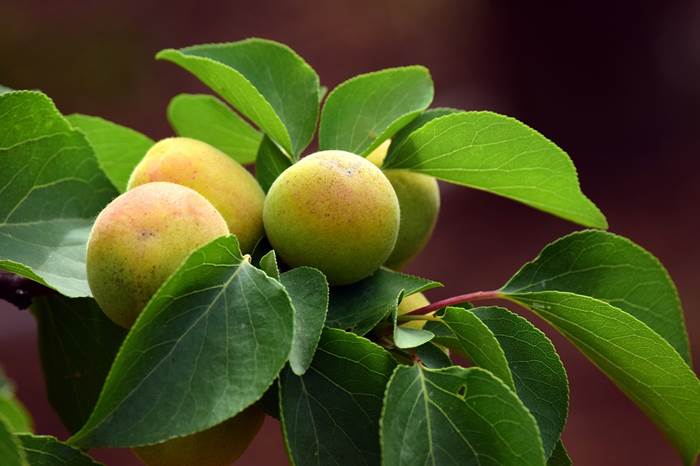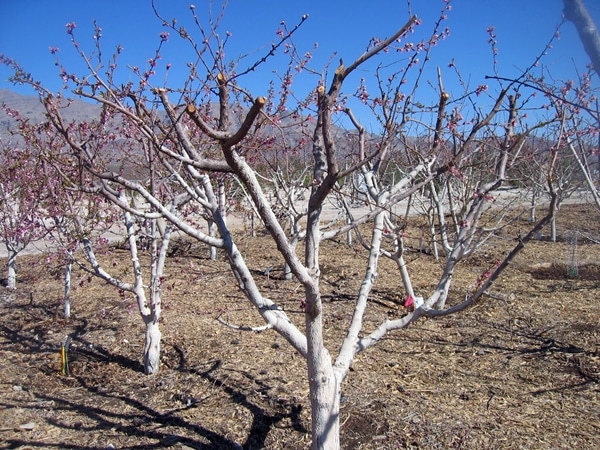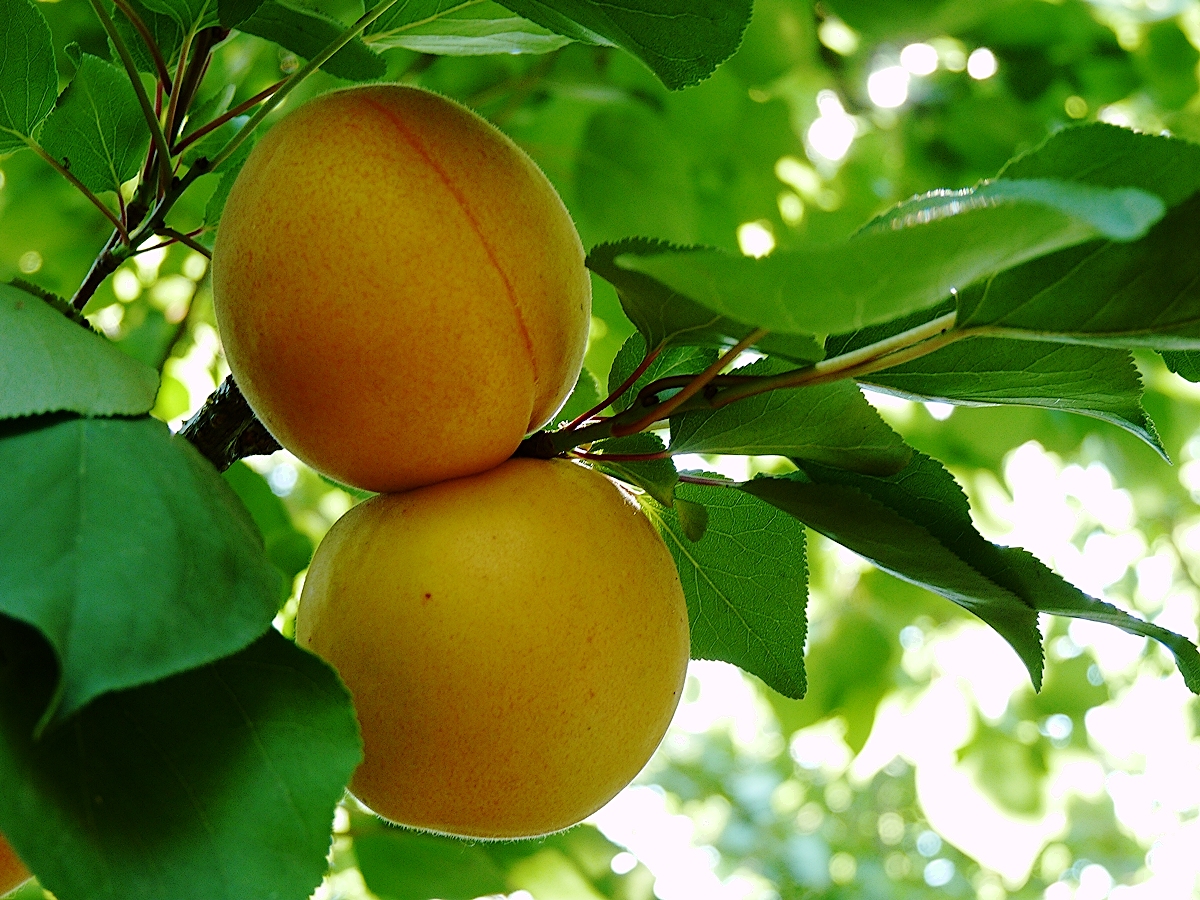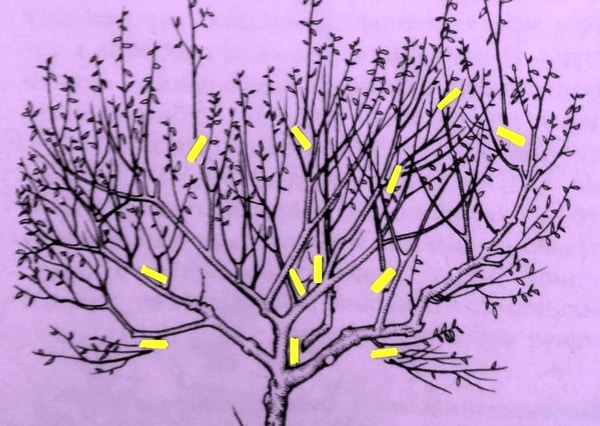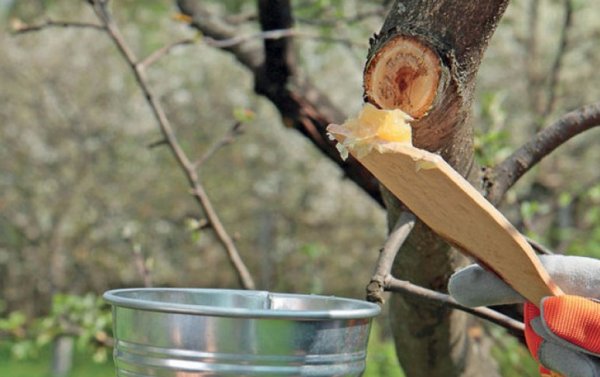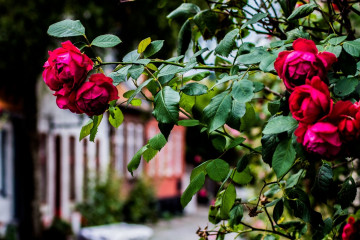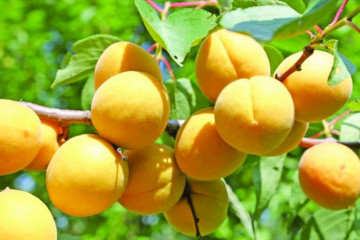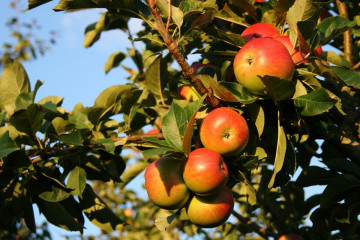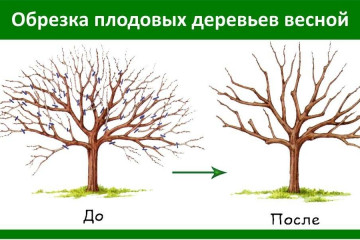Pruning apricots in the summer: when and how to do it right
Content:
Apricots branch strongly, thick branches develop quickly, which leads to a thickening of the crown. Because of this, the fruits become smaller, and the yield decreases. Therefore, caring for a stone fruit culture should not only consist of watering and feeding. The apricot should be pruned regularly. It promotes the rejuvenation of the tree, prevents the growth of shoots, prevents the branches from breaking under the weight of the fruit.
Do apricot trees need pruning and why
To get a healthy and bountiful harvest, the tree must be constantly monitored. This is why the apricot is pruned. This procedure is primarily an agrotechnical technique, thanks to which the tree not only bears fruit abundantly, but also does not get sick.
Pruning fruit trees is necessary in order to rejuvenate them, increase their lifespan and fruiting. If you do not carry out the annual formation of the apricot, then its fruits will shrink every year, and the thickened crown will lead to high humidity and a lack of light.
When to prune apricot branches
Before pruning an apricot, you must familiarize yourself with the rules for performing this procedure. Tree shaping can be carried out almost all year round, but the period from autumn to spring is considered the best. In this case, it is very important to be in time before the start of the growing season.
Young seedlings require more careful pruning. They sensitively react to temperature fluctuations and do not tolerate air cooling below +10 degrees. But before you cut the apricot in the summer, you need to deal with the available types of such seasonal formation.
For example, sanitary pruning of apricot in summer involves removing dried or infected branches. The method is quite simple - you need to leave good, healthy shoots and cut off all excess growth. These simple manipulations will allow you to get a good harvest and keep the tree healthy for many years.
When to prune lunar summer
Experienced gardeners recommend that you familiarize yourself with the lunar calendar before shaping an apricot. It's no secret that for many years it has been used by all summer residents to determine the best periods for planting, collecting or even weeding a garden plot. All favorable or unfavorable days are clearly spelled out in the lunar calendar. For example, pruning in July should be done only when the moon is rising. In this case, the procedure will bring maximum benefit not only to the tree itself, but also positively affect the yield of the apricot.
Features of pruning apricot in different growing regions
It is not recommended to prune young apricots in autumn, as the tree's reduced immunity will not allow it to withstand low temperatures. Experienced gardeners recommend shaping using a tiered system. It is best if several tiers of two branches remain on the tree. The size of the upper and lower shoots should be approximately the same. This will prevent shading.
In the summer, thinning pruning should be done. It is performed to remove inward branches and competing shoots. The strongest branches need to be shortened to 50 cm. This will facilitate the formation of new shoots. It is summer pruning that has a beneficial effect on the quantity of the crop and on its quality.
It is important to understand that each region has its own characteristics and timing of this manipulation. For example, the warm climate of the Krasnodar Territory and the North Caucasus allows pruning in February. You can also start shaping in November. However, at this time it is unacceptable for gardeners living in the regions of the Middle Strip to start this work. The optimal time for spring pruning is April, and for autumn pruning - early October.
Tools required for pruning apricot
Everyone, even a novice summer resident, should understand that before gardening work, it is necessary to properly prepare the inventory. To work, you will need the following tools:
- Garden pruner.
- Special saw.
- Garter string.
- Sharp knife.
- Antiseptic composition for the treatment of hands and tools.
- Bars and wooden sticks for making props.
- Tools for sharpening garden tools.
All equipment must be well sharpened and thoroughly decontaminated before work. If it shows signs of rust, then it can only be used after processing with a special garden paste.
Types of pruning of a fruit tree seedling
Pruning a young plant is very important. It is thanks to this procedure that it is possible to form the correct crown. Fruit trees are as demanding as possible for timely pruning. In just one season, this procedure is carried out several times. There are five commonly known types:
- Forming allows you to adjust the crown and it is thanks to it that a strong skeleton is formed, and the branches can branch correctly.
- Regulatory promotes the adjustment of all branches and shoots. This species is only suitable for mature trees.
- Sanitary pruning aims at getting rid of old or damaged branches. Also, during such procedures, all diseased parts of the tree should be removed and burned away from the personal plot.
- Normalizing shaping is aimed at limiting the volume of yield. An individual feature of an apricot is the ability to fertilize all flowers. Because of this, the tree can very quickly deplete and die. It is the rationing of the harvest that is able to preserve the tree and the number of healthy fruits.
- Pruning for the purpose of rejuvenation allows you to restore the yield of the apricot. It is applied at the moment when the growth of the shoots stops.
Anti-aging pruning can be done in three ways:
- Gradual - the process extends over three years.
- Partial - with the division of the crown of the tree in half.
- Cardinal. In this case, all branches that have reached 3 meters are subject to pruning.
The entire pruning process is aimed at growing the tree in width.Thanks to this, the apricot is able to withstand more fruits. All nutrients in this case will be redirected from the crown to the fruit.
In the first five years, it is required to choose the strongest and most viable branches. Only 5 main shoots should be left, which should be spaced 40-50 cm from each other.
First year
The first year of life is very important for the future fate of the apricot. The tree develops rather quickly and a central shoot is formed the next year. Before cold weather, it must be shortened by half.
Second year
Next year, the tree should have at least 3 side shoots, which need to be pruned quite a bit before the growing season. Thanks to this procedure, it is much easier for a young plant to endure frosts. The apricot will have plenty of time to form the immunity it needs so much.
Third year
More serious pruning should be done during this period. The optimal crown shape is a ball. In the third year, it is recommended to pay attention to the presence of old branches and, accordingly, they should be removed. Otherwise, fruiting will deteriorate significantly, although the number of ovaries will increase.
Fourth year
At the age of four, branches on the main stems appear on the tree, they must be removed without fail. Even the main branches should be shortened by 10-12 cm. The central trunk does not need to be touched, only long branches will need to be halved, while leaving short shoots.
After five years
At the age of five, the tree should already be fully formed. At this stage, it is required to perform regulatory pruning, which is aimed at removing the thickening of the crown. It is thanks to this that the apricot will bear fruit well.
Rules for caring for a tree after pruning
At the time of pruning, as well as after the procedure, the apricot should be carefully looked after. There is a whole list of procedures that must be performed:
- All places of damage should be carefully covered with garden varnish. The recommended layer thickness is 1 cm.
- Large wounds must be disinfected with a solution of copper sulfate.
- Fertilizers that need to be applied to the near-stem circle have a positive effect on the healing process. In this case, it is required to use preparations containing nitrogen and phosphorus.
If all medical procedures are untimely performed, then infection may begin in the damaged areas. Experienced gardeners recommend using a special agent for disinfection. The recipe is as follows: take 5 tablespoons of fir resin and 1 teaspoon of wax. All ingredients must be mixed and heated. After achieving complete homogeneity of the composition, it must be cooled and mixed with 1 tablespoon of alcohol.
Dangerous consequences of pruning
If the apricot pruning is incorrect, it can cause significant harm to the tree and its health. It is especially dangerous to use a blunt instrument, which leads to the appearance of serious damage. It is in such places, as a rule, that microbes multiply and fungal spores arise. If the procedure is performed out of time, for example, in late autumn, then the wounds do not have time to heal and the tree dies. The use of untreated tools can also lead to a serious infection of the tree.
Even heavy pruning will not harm if you follow these rules:
- Downward branches are removed completely.
- The cut of adult shoots is carried out exclusively at an angle, the recommended angle is 45 degrees.
- All shoots growing inward must also be pruned.
- If a branch is drooping, it should be shortened exactly to the point where the branching begins.
- The maximum barrel length should not exceed 2 meters.
- The rejuvenation process should not start earlier than three years later.
- Shoots should be cut directly near the buds. Do not leave hemp in which fungi and microbes start.
It is important to understand that only in the case of constant control over the seedling will it be possible to grow the most healthy tree that will delight its owner for many years.
